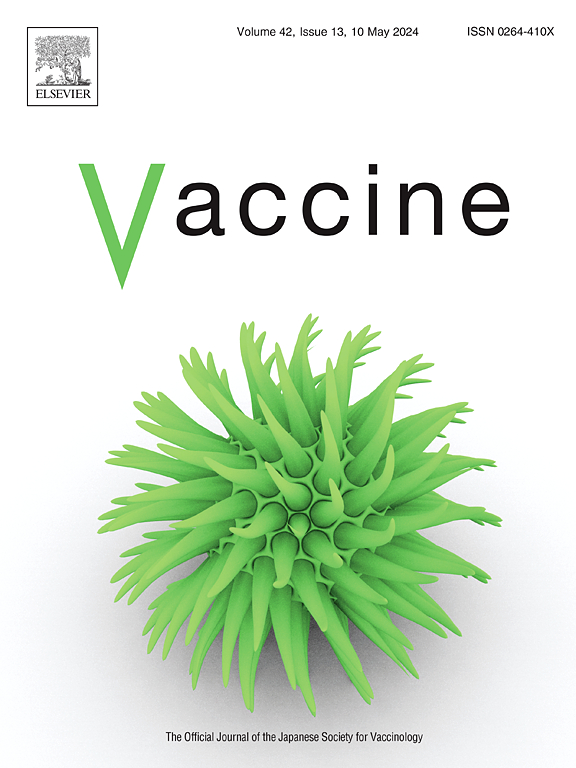将疫苗纳入国家免疫规划后的监测战略:系统回顾
IF 4.5
3区 医学
Q2 IMMUNOLOGY
引用次数: 0
摘要
《2030年免疫议程》设想的全球格局是,通过扩大公平覆盖,每个人都能平等获得新疫苗和现有疫苗的益处。引进后评价战略对于确保有效和合理地利用投资于免疫规划的资源至关重要。然而,关于如何在低收入和中等收入国家应用这些战略的文献仍然存在显著差距。本研究确定了在将疫苗纳入免疫规划后世界范围内用于监测疫苗的主要策略。方法本系统文献综述按照Cochrane干预措施系统评价手册进行,并遵循PRISMA指南进行报道。研究检索自PubMed (MEDLINE)、Web of Science、Core Collection、SCOPUS和EMBASE (Elsevier)数据库。该综述包括纳入免疫规划后的疫苗监测研究,没有日期限制。排除了叙述性和系统评价、荟萃分析、信件、书籍章节、海报、COVID-19疫苗研究、非人类疫苗接种研究以及在没有引入后监测的情况下评估总体影响的研究。结果共检索到4812条引用,删除了1477条重复。在筛选了3335篇题目和摘要后,有9篇研究符合纳入标准。虽然引进后监测战略的概念仍然不明确,但研究表明,可以通过对监测系统的评价、经济评估和适应的分析工具来进行这种监测。涉及卫生保健工作者和服务机构的哨点监测是最常报告的战略,其次是综合控制方法、引入前和引入后比较以及使用世界卫生组织工具。尽管缺乏引入后疫苗监测的标准化框架,但现有研究表明,评估可以解决有效性、安全性、覆盖率和成本问题。除了具有流行病学意义外,将疫苗纳入免疫规划还提供了加强政策、促进劳动力发展和促进社会动员以支持疫苗接种的机会。本文章由计算机程序翻译,如有差异,请以英文原文为准。
Monitoring strategies after the incorporation of vaccines into national immunization programs: a systematic review
Introduction and objective
The 2030 Immunization Agenda envisions a global landscape where everyone can equally access the benefits of both new and existing vaccines by expanding equitable coverage. Post-introduction evaluation strategies are essential to ensure efficient and rational use of resources invested in immunization programs. However, a notable gap remains in the literature on how these strategies are applied in low- and middle-income countries. This study identify the main strategies used worldwide to monitor vaccines after their incorporation into immunization programs.
Methods
This systematic literature review was conducted in accordance with the Cochrane Handbook for Systematic Reviews of Interventions and reported following PRISMA guidelines. Studies were retrieved from PubMed (MEDLINE), Web of Science, Core Collection, SCOPUS, and EMBASE (Elsevier) databases. The review included studies on vaccine monitoring after incorporation into immunization programs, with no date restrictions. Excluded were narrative and systematic reviews, meta-analyses, letters, book chapters, posters, COVID-19 vaccine studies, non-human vaccination research, and studies assessing general impact without post-introduction monitoring.
Results
The search identified 4812 citations, with 1477 duplicates removed. After screening 3335 titles and abstracts, nine studies met the inclusion criteria. While the concept of post-introduction monitoring strategies remains poorly defined, the studies revealed that such monitoring can be performed through evaluation of surveillance systems, economic assessments, and adapted analytical tools. Sentinel surveillance, involving healthcare workers and services, was the most frequently reported strategy, followed by synthetic control methods, pre- and post-introduction comparisons, and use of a World Health Organization tool.
Conclusions
Despite the absence of a standardized framework for post-introduction vaccine monitoring, existing studies demonstrate that evaluations can address effectiveness, safety, coverage, and cost. Beyond epidemiological significance, the incorporation of vaccines into immunization programs provides an opportunity to strengthen policies, promote workforce development, and foster social mobilization in support of vaccination.
求助全文
通过发布文献求助,成功后即可免费获取论文全文。
去求助
来源期刊

Vaccine
医学-免疫学
CiteScore
8.70
自引率
5.50%
发文量
992
审稿时长
131 days
期刊介绍:
Vaccine is unique in publishing the highest quality science across all disciplines relevant to the field of vaccinology - all original article submissions across basic and clinical research, vaccine manufacturing, history, public policy, behavioral science and ethics, social sciences, safety, and many other related areas are welcomed. The submission categories as given in the Guide for Authors indicate where we receive the most papers. Papers outside these major areas are also welcome and authors are encouraged to contact us with specific questions.
 求助内容:
求助内容: 应助结果提醒方式:
应助结果提醒方式:


